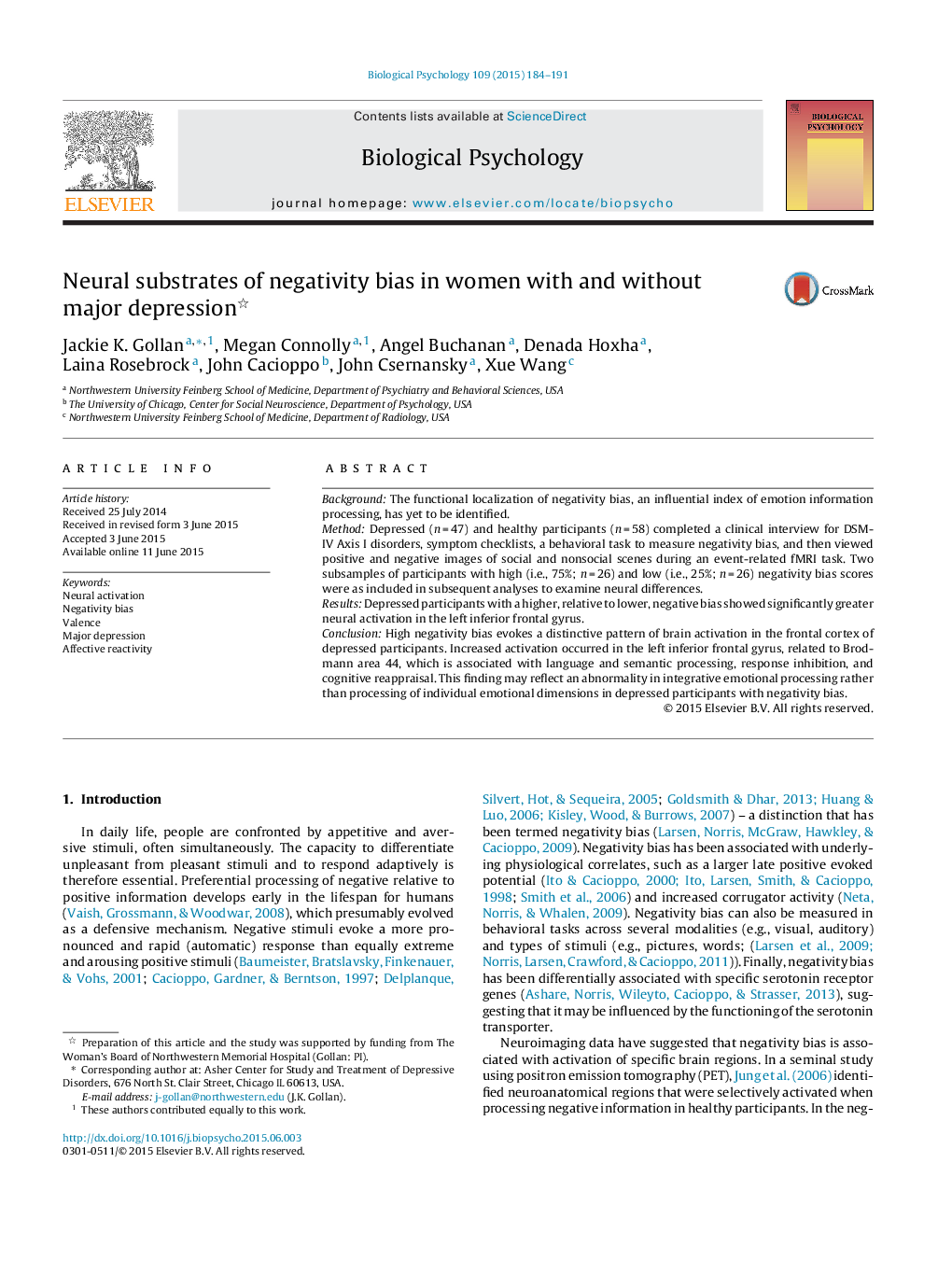| Article ID | Journal | Published Year | Pages | File Type |
|---|---|---|---|---|
| 920830 | Biological Psychology | 2015 | 8 Pages |
•Heightened preferential processing of negative information among depressed participants, but not healthy participants, was associated with increased activation in the left inferior frontal gyrus.•Increased activation occurred in the left inferior frontal gyrus (related to Brodmann area 44), which is associated with language and semantic processing, response inhibition, and cognitive reappraisal.
BackgroundThe functional localization of negativity bias, an influential index of emotion information processing, has yet to be identified.MethodDepressed (n = 47) and healthy participants (n = 58) completed a clinical interview for DSM-IV Axis I disorders, symptom checklists, a behavioral task to measure negativity bias, and then viewed positive and negative images of social and nonsocial scenes during an event-related fMRI task. Two subsamples of participants with high (i.e., 75%; n = 26) and low (i.e., 25%; n = 26) negativity bias scores were as included in subsequent analyses to examine neural differences.ResultsDepressed participants with a higher, relative to lower, negative bias showed significantly greater neural activation in the left inferior frontal gyrus.ConclusionHigh negativity bias evokes a distinctive pattern of brain activation in the frontal cortex of depressed participants. Increased activation occurred in the left inferior frontal gyrus, related to Brodmann area 44, which is associated with language and semantic processing, response inhibition, and cognitive reappraisal. This finding may reflect an abnormality in integrative emotional processing rather than processing of individual emotional dimensions in depressed participants with negativity bias.
